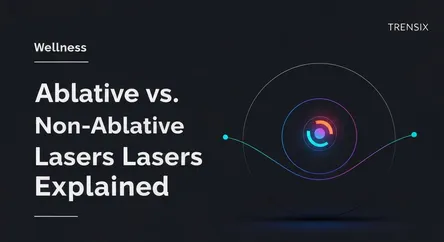Wellness
Ablative vs. Non-Ablative Lasers Explained

Understand the key differences between ablative and non-ablative laser treatments to see which skincare approach is right for your beauty goals.
What is it?
Ablative and non-ablative lasers are two primary types of laser skin resurfacing treatments. The main difference lies in their method and intensity. Ablative lasers, such as CO2 and Erbium lasers, work by vaporizing the outer layer of the skin (epidermis) and heating the underlying dermis. This process stimulates significant collagen production, leading to dramatic skin rejuvenation.
Non-ablative lasers are less invasive. They work by heating the tissue under the skin's surface without removing the top layer. This heat still stimulates collagen growth to improve skin tone and texture, but the results are more gradual compared to ablative treatments.
Why is it trending?
Laser resurfacing is a popular and growing trend in cosmetic dermatology for those seeking significant improvements in their skin without undergoing surgery. These treatments effectively address a wide range of concerns including fine lines, deep wrinkles, sun damage, acne scars, and uneven skin tone. The ability to achieve noticeable, long-lasting results is a major draw. Furthermore, the development of fractional lasers—which can be either ablative or non-ablative—has reduced recovery times and risks, making these advanced treatments more accessible and appealing to a broader audience.
How does it affect people?
Ablative lasers offer more dramatic and often permanent results from a single session but require significant downtime. Patients can expect a recovery period of several weeks, involving redness, swelling, and peeling. This intensive treatment is ideal for individuals with deeper wrinkles or significant scarring. In contrast, non-ablative lasers have minimal to no downtime, with side effects typically limited to mild, temporary redness. While gentler and safer for a wider range of skin types, they require multiple sessions to achieve desired results, which are generally less dramatic than those from ablative lasers.